PROVINCETOWN — After years of planning and delays, the “inclined elevator” (which is close to, but not the same as, a funicular), arrived on Feb. 12 from Switzerland, following a holdup in U.S. Customs.
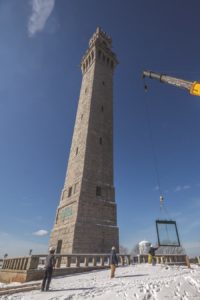
The $5 million Bradford Access Project, funded by the Pilgrim Monument and Provincetown Museum (PMPM), will carry up to 18 passengers up 85-foot-tall High Pole Hill in two-minute rides. It’s expected to be completed by spring, said K. David Weidner, PMPM’s executive director.
In Provincetown, the project has been clouded by complaints about noise and traffic, as well as worries by some that it will resemble an amusement park ride in the middle of downtown. In 2019, Paul Teixeira, who owns a unit in the nearest property at 116 Bradford St., sued PMPM over these and other issues. They settled that same year; both parties agreed not to disclose the terms. Since then, Teixeira and his partner, Lee Kugler, have started running their unit as a guest house, called Burch House, according to the Barnstable County Registry of Deeds.
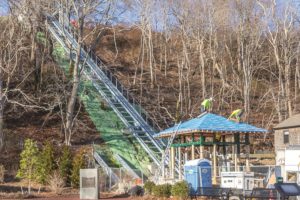
This type of outdoor elevator is rare in the U.S. There are only 30 to 40 inclined elevators and funiculars in the nation — with only one other in Massachusetts. Most of these are smaller, privately owned models, according to both Civil + Structural Engineer and Engineering News-Record, which ran feature stories on the Provincetown elevator. It operates with an electric cable to pull the car up the hill on a track without the sort of counterweight used for traditional funiculars, Steven Roth, president and CEO of Elevator Service Co. of Torrington, Conn., told the Independent.
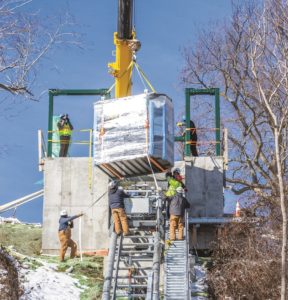
“We are extremely proud to be a part of this,” said Roth, citing the project’s international and historical significance. Other companies involved include Robert B. Our; Coastal Engineering; architects Brown, Lindquist, Fenuccio & Raber; Safe Harbor Environmental Services; and Outdoor Engineers of Colorado and Switzerland. Another contractor, Jay Cashman of Quincy, who donated $150,000, has a special interest. His great-great-uncle owned the quarry that supplied the granite for the monument itself, completed in 1910, according to the Engineering News-Record.
The project presented some interesting engineering challenges. Like most of Cape Cod, the 85-foot hill is basically a giant sand dune, John Bologna, president and chief executive officer of Coastal Engineering, told Civil Engineering Source, the publication of the American Society of Civil Engineers.
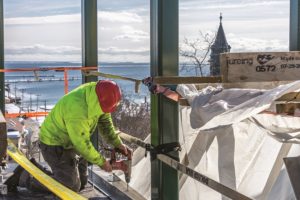
“Slope stability” required the engineers to drive helical pier foundations 45 feet into the soil, he said. Originally, they thought 20 feet would suffice, but load tests revealed that the loose sand required more reinforcement.
The base of the elevator on Bradford Street presented another challenge. It is in a flood zone with the water table only three feet below the surface, according to
Engineering News-Record. Kevin Trombly, project manager for Robert B. Our, said that in order to lay the 15-foot-deep foundation, they had to set up a series of well points and pump water out, which took several days. They then lowered a precast box foundation into the ground.
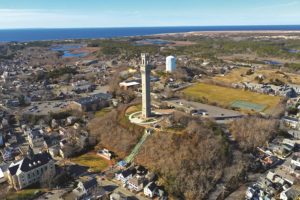
That’s a lot of work, planning, and risk, but for PMPM, it could be worth it. The inclined elevator is expected to double or triple the number of visitors to the monument and museum, Weidner said. About 100,000 people buy tickets in a normal year, but with a novel way to get to the top of High Pole Hill, that could now go as high as 300,000. Ticket prices have not been determined, but the elevator ride will be part of the admission fee, Weidner said.



